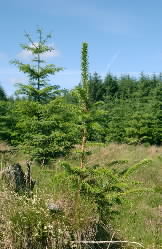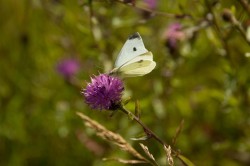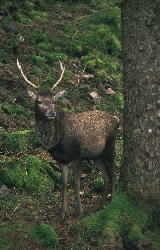Summary
Summary

This project aims to examine biodiversity links with stand age, with a view to exploring how to incorporate biodiversity into an optimal rotation length model. This is part of a wider agenda of accounting for the multiple benefits of woodlands in decision-making frameworks.
Research objectives
- To review approaches taken in previous work incorporating biodiversity in rotation length models.
- To review evidence of how biodiversity varies with the age of woodlands for various woodland types, forest management approaches and climatic conditions.
- To provide recommendations on the approach to adopt to incorporate biodiversity in developing optimal rotation length models and any associated research needs or gaps identified.
 Results so far
Results so far
- We found few economic models linking biodiversity and rotation length. Two major approaches, direct and indirect, were identified. The direct approach uses biodiversity values (or its proxy), with changes with stand age directly incorporated in maximising net present value. It requires robust estimates of biodiversity values.
- Where the biodiversity value is unknown, a set of management constraints required for conservation may instead be included. In this case an indirect approach is used, taking these constraints and associated costs into account in estimating optimal rotation length.
• This study focuses primarily on total numbers of species (‘species richness’). The literature review revealed no simple or universal response of species richness to stand age, with variations between taxa and sites. Overall, there was more evidence of increasing biodiversity with stand age, than of a fall (or of no change).
sites. Overall, there was more evidence of increasing biodiversity with stand age, than of a fall (or of no change).
• Re-analysis of UK Biodiversity Assessment Project data found no evidence of significant changes in biodiversity with stand age in most cases. Upland Sitka spruce stands were an exception, where a shallow U-shaped response was identified with biodiversity levels higher in young and mature forests with a minimum around 40 years.
• Recommendations are made for future research.
Status
Project started in 2012. Project completion (for this round of research): 2017, with FC Research Note and FR research report published. Current activities: working on a journal article.
Contact
Funders and partners
FC funded, Economics Programme
General Content
Related documents
- Links between biodiversity and rotation – full report
- Links between biodiversity and rotation – full report (printer friendly)
- Biodiversity and rotation length: economic models and ecological evidence Research Note
- How does a biodiversity value impact upon optimal rotation length? An investigation using species richness and forest stand age
